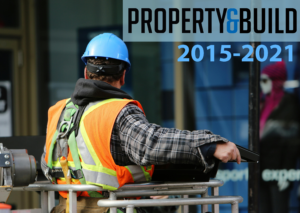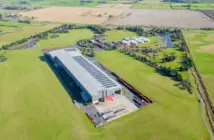34,672 dwelling consents were issued for the year to May, the highest since December 1974, putting us firmly in the midst of one of the three biggest new building booms on record, CoreLogic Senior Property Economist Kelvin Davidson says

The latest dwelling consents figures confirmed that the ramping up of construction activity across NZ isn’t finished yet, despite signs of capacity constraints around labour and materials in the industry. Consents for alterations & additions are also pretty buoyant, albeit the total value for the year to May of $1.77bn was about $90m lower than the peak of $1.86m in the 12 months to July last year.

A key feature of this construction boom has been the shift in the mix of activity towards smaller dwellings, such as apartments, flats, and townhouses. Obviously, these dwellings can accommodate more people on smaller plots of land than standalone houses, with a more intensified housing stock clearly pretty handy given our still quickly growing population. This shift is more evident in Auckland than anywhere else, with new consents for smaller dwellings recently overtaking standalone houses for the first time on record (see the second chart).

It’s also really interesting to put the construction activity into context in terms of how many houses each part of the country already has. In Auckland, for example, total new consents of around 13,800 over the past year is equivalent to 3.1% of the roughly 448,000 dwellings that already exist in the city. That’s quite a high figure, but in fact doesn’t even put it in the top 10 – these areas are shown in the third chart, and no real surprise that Queenstown-Lakes District tops the list. Over the past year, it has had new dwelling consents equivalent to more than 8% of existing stock. The construction hotspots in Canterbury, i.e. Selwyn and Waimakariri, also both feature in the top 10 (actually top six).

Now to be fair, these areas have also generally had strong population growth in recent years, which has helped to fill the new houses. But with property values having slowed pretty dramatically in recent months in Queenstown, for example, there could now be signals starting to come through that the construction boom there needs to slow. Admittedly, this analysis doesn’t take account of demolitions, and as we’ve outlined in the past, infill of cleared brownfield sites is significant, for example, in Auckland (and hence the actual dwelling stock is growing much more slowly than growth in consents). But demolitions and brownfield development won’t be anything like as a big an issue in Queenstown, so that’s another reason to be wary about what continued high levels of new dwelling consents there would mean for property values – especially since demand is also being cut by low affordability and the Foreign Buyer Ban.
At the other end of the spectrum, the fourth chart shows the 10 areas of the country where dwelling consents over the past year have been the lowest relative to housing stock. Given their strong rises in property values over the past year, it’s no surprise to see areas such as Kawerau and Tararua pop up on this list of low construction activity. The opposite to Queenstown, this signals that these areas need more new houses to come onstream.




